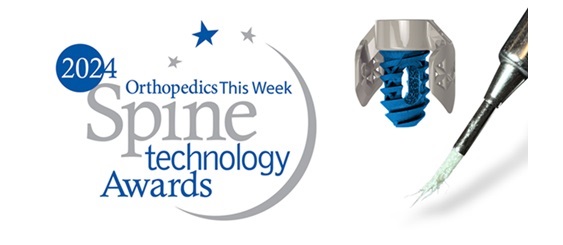PLANO, TEXAS, September 18, 2024 – OrthosSpineNews – September is National Pain Awareness Month – an ideal time to explore causes and treatment methods for back pain, which is widely reported as one of the world’s most common medical conditions. Lower back pain alone affects more than 619 million people across the world, as reported by the World Health Organization.
Established in 2001, National Pain Awareness Month is observed every year to raise awareness about various aspects of pain, in particular, chronic pain, which can be completely debilitating. Otherwise known as long-term pain, chronic pain affects the lives of millions, according to the CDC.
Jeremy Denning, MD, and Krishna Satyan, MD – both of whom are board-certified and fellowship-trained neurosurgeons with Dallas Neurosurgical & Spine in Plano, Texas – have treated thousands of chronic back pain cases during their careers. Although they are accomplished brain and spine surgeons, Dr. Denning and Dr. Satyan focus on nonsurgical treatments first.
“I have found that up to 80% of patients with back and spine issues are able to improve without surgical treatment,” says Dr. Satyan. “Back health can be affected by so many things – genetics, accidents, body mechanics, exercise, even smoking. While we cannot do much about our genes, there are many things that we can do to improve back health, particularly for chronic conditions.”

Krishna Satyan, MD
Dr. Denning notes that one of the most common factors that can contribute to chronic back pain is sitting in one position for too long, too often. Sitting in the same position for prolonged time periods can cause short-term stiffness or sore muscles and can even cause long-term damage, such as degenerative arthritis.
“A lot of people have to sit in the same place for extended periods of time for work or school. If you do, try to shift positions every so often; and if you have the option, consider a stand-up desk or Swiss exercise ball, instead of a chair,” says Dr. Denning. “Get up and walk around for a minute or two, every hour-and-a-half or so. Getting up to get a glass of water is a good excuse to move around and helps keep you hydrated. In addition, staying hydrated helps keep your muscles, organs, joints and even the discs in your back healthier, so there’s an added benefit.”

Jeremy Denning, MD
How much water each person needs varies based on that person’s unique lifestyle – activity levels, weight, salt-intake – all of which need to be considered when determining the “right” amount of water, adds Dr. Denning. “If you aren’t sure how much you need, consider talking with your doctor or a nutritionist.”
Another common cause of chronic back pain stems from cell phone and tablet usage, which is becoming more prevalent every year, adds Dr. Satyan. “When we hunch over our handheld devices for extended periods, it puts a lot of pressure on the muscles and ligaments in our necks and backs, which can lead to discomfort and even chronic pain. We’re seeing more cases of this every year, even amongst young children.”
In extreme cases, the use of handheld devices could potentially lead to permanent changes in posture, warns Dr. Satyan. To avoid this, Dr. Satyan recommends being intentionally mindful of posture and taking regular breaks from handheld devices to stretch and move around freely.
“Holding your phone or tablet at eye level, instead of constantly looking down also can be helpful,” notes Dr. Satyan. “Lastly, if you’re going to be on the phone for a while, consider using a headset or speakerphone, so you don’t have to hold your phone up to your ear.”
In addition, both Dr. Satyan and Dr. Denning say that exercise is an effective way to improve back health. Exercise strengthens bones and muscles and helps increase blood flow and oxygen. For optimal back health, both doctors recommend a combination of core strengthening and cardiovascular exercise.
“For core strengthening, focus on both the abdominal and the extensor muscles, the muscles that help hold the body upright, so that your spine is better supported,” says Dr. Satyan. “It’s easy to overdo it, especially in the beginning, so start out small. If you aren’t sure where to begin or how much is too much, ask your doctor or personal trainer. Establish a regular routine and consider asking a friend to join you – it will help keep you motivated and can be more fun than exercising alone. For cardiovascular, consider swimming or walking because they create less stress on the body.”
Dr. Denning recommends adding a few small exercises and stretches to everyday activities to “kick start” an exercise routine. “If you’re looking for some quick exercises that will help improve your back health, try neck rolls and shoulder rolls. They’re easy to do and can be done virtually anywhere. You can also try side planks or face-down planks. I do these in my office in between patients, a few times a day. It doesn’t have to be overly involved. A little more movement here and there can go a long way toward improving your back health.”
Dallas Neurosurgical & Spine is the longest running, privately held neurosurgical group in North Texas, with more than 50 years of experience caring for patients. Located in Plano, Texas, the nationally renowned neurosurgical care center draws patients from all over the United States, treating approximately 6,000 patients per year. The practice’s doctors are widely regarded for their exceptional skill, specialized training and patient-centered approach. For more information, visit https://www.dallasneurosurgical.com.
###
Media Contact:
Krista Simmons
Bluebonnet Public Relations
682-225-9135
krista@bluebonnetpublicrelations.com







